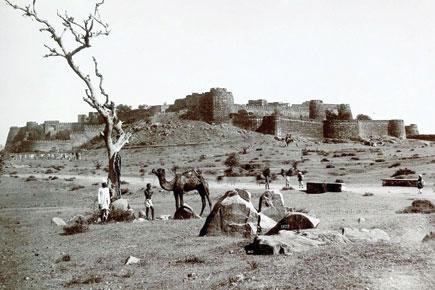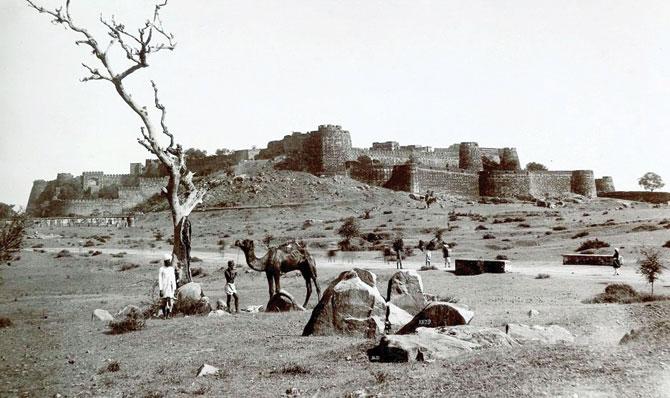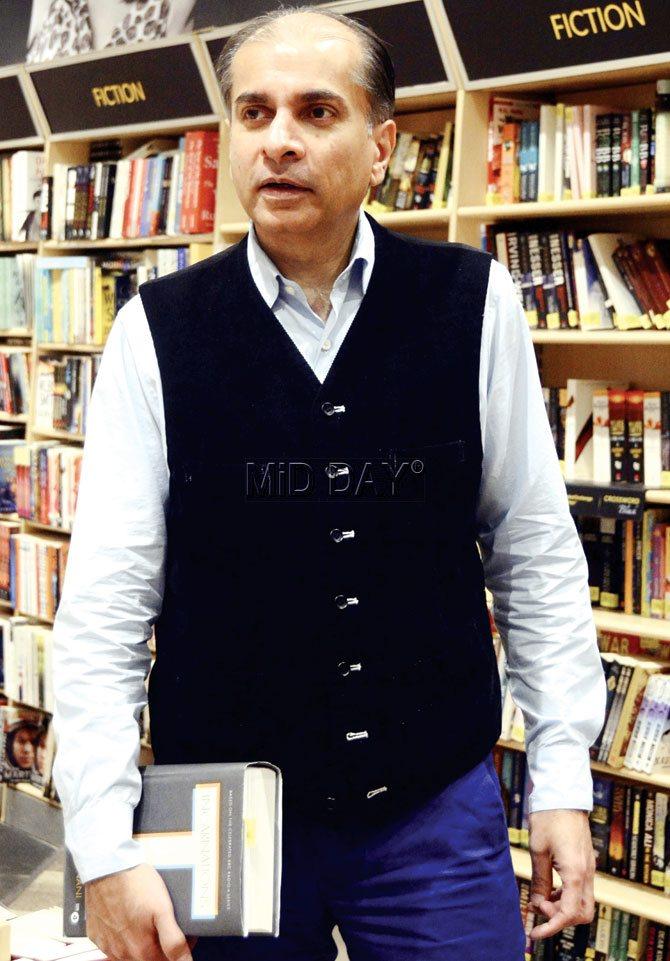In town to promote his new book, Incarnations: India in 50 Lives, Sunil Khilnani talks about India's history and how it still holds surprises for him

Deen Dayal's photograph of Jhansi Fort from Scenes and Sculptures of Central India, 1882
Restoring the hues in the lives of the 50 characters he presents in his new Penguin-Random House publication, Incarnations: India in 50 Lives, figures that text books would have us remember in monochrome, historian Sunil Khilnani turns saints, rebels, artistes and heroes — some you might worship and many you’ve never heard of — into real people.
ADVERTISEMENT

Deen Dayal’s photograph of Jhansi Fort from Scenes and Sculptures of Central India, 1882. Pic/ The British Library Board
He allows them their flaws and contradictions and laces their lives together with cross-references while enlivening their stories with witand humour. History was never so exciting. Edited excerpts from an interview:

Pic/Bipin Kokate
Q. In the BBC 4 podcast about Amrita Shergill, you complain about the instructions of the director of a Delhi museum. Were there many such frustrations?
A. It was so difficult sometimes to get access to archaeological sites, because of this business of bureaucratic permissions...but having said that, once people understood what the project was, it was fine. The most problematic was Tuticorin port, where I wanted to talk about Chidambaram Pillai – the director was completely uncooperative about allowing us to record a story about the man after whom the port is named. If only we were more open about these things, I think people would value some of these archaeological sites, and try to find out why is this a valuable site, why is it named after this person...whereas if we keep them like closed, dead spaces where no one with an inquisitive mind can enter, we lose the point of them.
Q. When V K Menon was Defence Minister, arms factories ware manufacturing pressure cookers; that Gandhi experimented with women…these haven’t been mentioned. How did you decide what to leave out?
A. That’s always difficult. How can you distil any life in even 500 pages, let alone 10. I have no claim to this being the last word or a kind of encyclopaedic account of the lives. The elements that I chose to include are ones that I hope will let us see them as human-beings, who we can understand, and who we can imagine inviting to dinner or having a meal with, rather than figures who’re completely alien because they’re so great or so distant, in the past...particularly for the younger generation to see that Indian history is full of real people, not just goody-goody pious figures.
Q. You write, “Gandhi once said of Tata that he ‘never looked to self-interest.’ Gandhi was wrong about that.” Do you feel Indian memory is selective?
A. I think all memory is selective. We choose to remember things in ways that reinforce our own biases. These lives continue to have afterlives, and that’s a product of selective memory — hence, the title of the book, Incarnations. This book is a corrective reminder. It’s about both, how things were, and how we use or sometimes misuse these lives today. So, it’s playing with that tension. What I want to do is to enrich the historical basis of our memory of these people. The story about Tata shows how globalised India was already by the late 19th century and also that Tata was trying to globalise his company in very difficult circumstances, where the colonial system was doing everything it could to obstruct him. The second thing it also shows — which, for me, is valuable today — is that Tata had the capacity to combine private interest and public purpose. He was very good at making profit but also very good at thinking about how he could use that to better society, something that is lacking in our corporate tycoons today, unfortunately.
Q. We believe that Aryabhatta had discovered zero. I’m sure it would surprise many to learn that Tagore was once received by Mussolini. Did anything you come across through your research surprise you?
A. The story of Birsa Munda was a real revelation for me — this young boy who grew up in the forest. He was a healer and this extraordinary leader of his people, taking on the British and the missionaries, both groups that he owed a lot to too because they educated him. The book is studded with new facts or insights and perspectives and I hope that even those who are very familiar with these stories will discover something new.
Q. In the essay on Ramanujan, you’ve discussed mock theta functions, infinite series etc. With achievers from so many spheres, did you frequently have to step out of your comfort zone?
A. That was part of the fun. Because this was a work of self-education — me learning about fields and so many areas of human thought that I didn’t know much about. So, whether it’s Panini and Sanskrit grammar or Aryabhatta and Sanskrit in ancient mathematics, Ramanujan…the poetry and painting of Basava and Nainsukh, these were explorations into our past. I was trying to educate myself. And I hope that spirit is there in the book, hope that when people read it they’ll have that feeling of discovering our past anew, not coming to it with a tired eye.
 Subscribe today by clicking the link and stay updated with the latest news!" Click here!
Subscribe today by clicking the link and stay updated with the latest news!" Click here!








